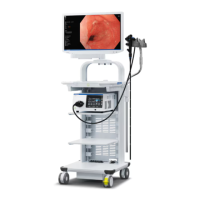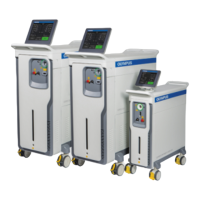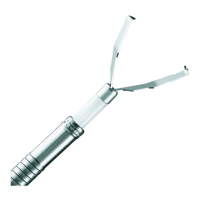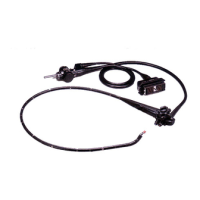24
Chapter 3 Preparation and Inspection
EVIS EXERA II TJF TYPE Q180V OPERATION MANUAL
3.2 Inspection of the endoscope
Clean and disinfect or sterilize the endoscope as described in the
“REPROCESSING MANUAL” with your endoscope model listed on the cover.
Then remove the water-resistant cap from the endoscope connector.
Inspection of the endoscope
1.
Inspect the control section and the endoscope connector for excessive
scratching, deformation, loose parts, or other irregularities.
2. Inspect the boot and the insertion section near the boot for bends, twists, or
other irregularities.
3. Inspect the external surface of the entire insertion section including the
bending section and the distal end for dents, bulges, swelling, scratches,
holes, sagging, transformation, bends, adhesion of foreign bodies, missing
parts, protruding objects, or other irregularities.
4. Inspect the forceps elevator and the area which can be visually accessible
in elevator recess, while raising and lowering the forceps elevator to confirm
that there is not any foreign materials, such as debris and fluids, but not
limited to. If any foreign materials are observed, stop using the endoscope
and take necessary measures according to Section 6.2, “Inspection before
each patient procedure” on page 72.
Use of an endoscope with residual foreign materials for a
patient procedure may pose an infection control risk.
5. Holding the control section with one hand, carefully run your other hand
back and forth over the entire length of the insertion section (see Figure
3.2). Confirm that no objects or metallic wire protrude from the insertion
section. Also, confirm that the insertion tube is not abnormally rigid.

